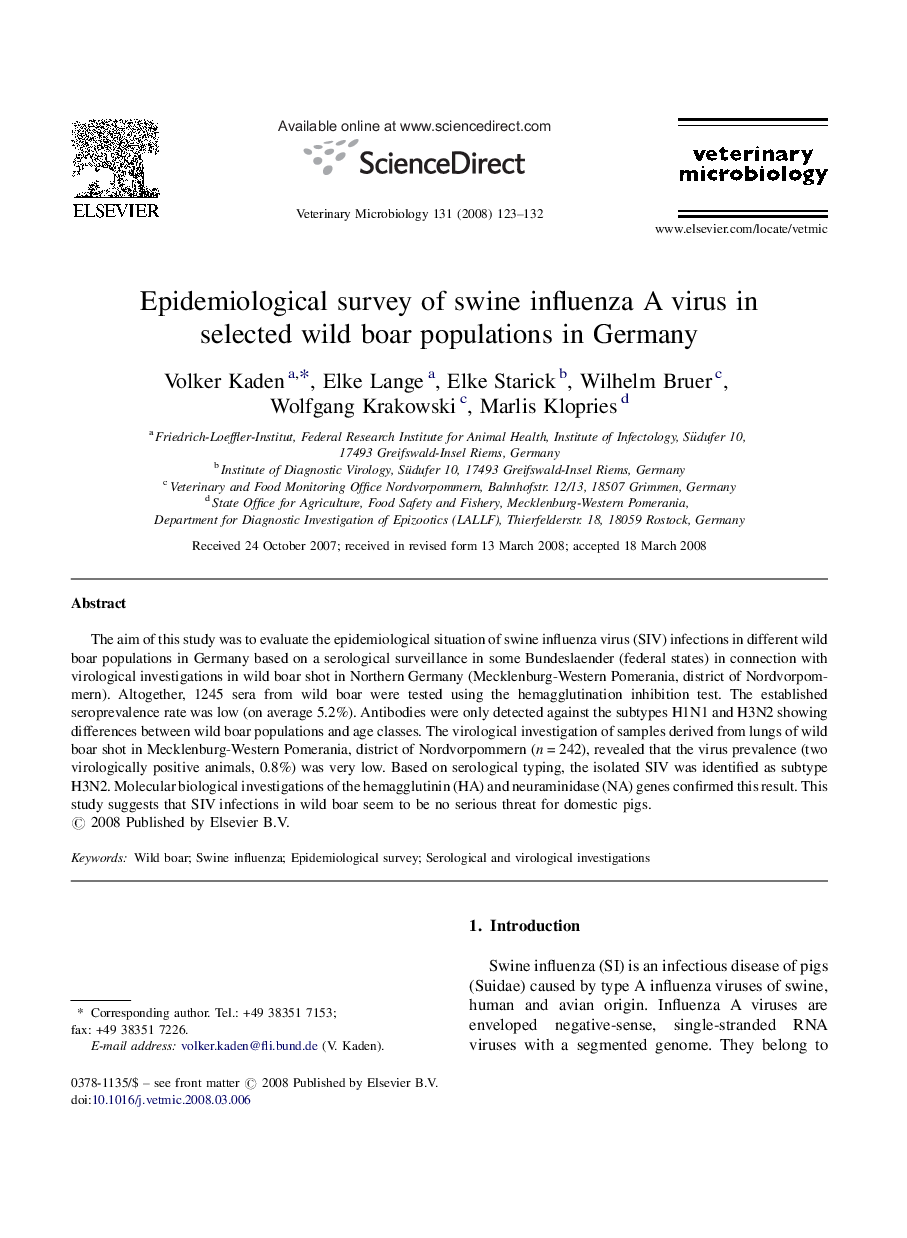| Article ID | Journal | Published Year | Pages | File Type |
|---|---|---|---|---|
| 2468759 | Veterinary Microbiology | 2008 | 10 Pages |
The aim of this study was to evaluate the epidemiological situation of swine influenza virus (SIV) infections in different wild boar populations in Germany based on a serological surveillance in some Bundeslaender (federal states) in connection with virological investigations in wild boar shot in Northern Germany (Mecklenburg-Western Pomerania, district of Nordvorpommern). Altogether, 1245 sera from wild boar were tested using the hemagglutination inhibition test. The established seroprevalence rate was low (on average 5.2%). Antibodies were only detected against the subtypes H1N1 and H3N2 showing differences between wild boar populations and age classes. The virological investigation of samples derived from lungs of wild boar shot in Mecklenburg-Western Pomerania, district of Nordvorpommern (n = 242), revealed that the virus prevalence (two virologically positive animals, 0.8%) was very low. Based on serological typing, the isolated SIV was identified as subtype H3N2. Molecular biological investigations of the hemagglutinin (HA) and neuraminidase (NA) genes confirmed this result. This study suggests that SIV infections in wild boar seem to be no serious threat for domestic pigs.
